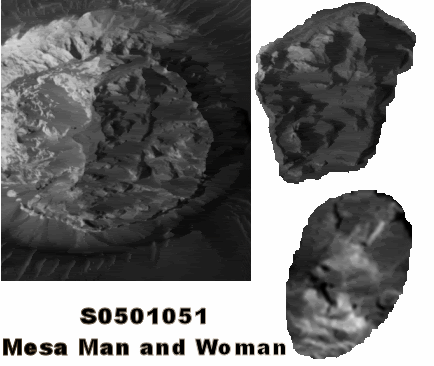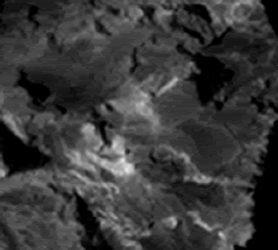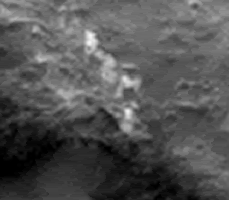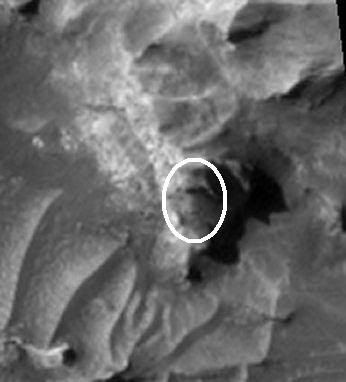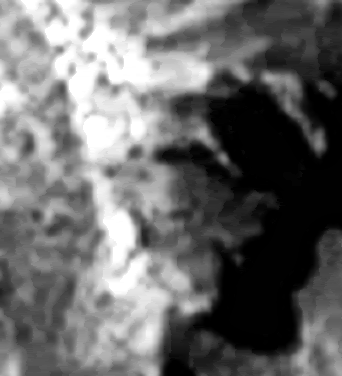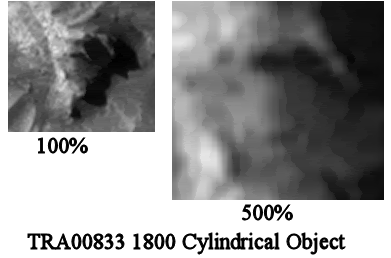- Thank you received: 0
Mro--First Looks
- Larry Burford
-
- Offline
- Platinum Member
-

Less
More
18 years 6 months ago #17702
by Larry Burford
Replied by Larry Burford on topic Reply from Larry Burford
[neilderosa] "My job ... is to make the case. Your job is to raise doubts. History will be the judge."
I like that.
[neilderosa] " ... history < ... teaches us that ... > valid new paradigms are often rejected falsely, vehemently and passionately, for one reason or another. Not always, but quite frequently. From our vantage point we can't judge the outcome."
And that.
Thank you very much,
LB
I like that.
[neilderosa] " ... history < ... teaches us that ... > valid new paradigms are often rejected falsely, vehemently and passionately, for one reason or another. Not always, but quite frequently. From our vantage point we can't judge the outcome."
And that.
Thank you very much,
LB
Please Log in or Create an account to join the conversation.
- neilderosa
-
- Offline
- Platinum Member
-

Less
More
- Thank you received: 0
18 years 6 months ago #17707
by neilderosa
Replied by neilderosa on topic Reply from Neil DeRosa
Awhile back, I posted this mesa on another thread. I said that not only were there Mars glyphs (faces) on this mesa, but that there were two or more cylindrical objects possibly standing upright on the mesa, specifically on the woman’s face. (One is on her "nose.") They had a dark line or lines crossing the cylinder, sort of like on an electronic resistor. S0501051, at 3.0 m/p.
There was just one comment on the faces, and none on the cylinders. I’m not complaining though; individuals vary on their ability to see small objects at a distance, and unless one can provide proof, who’s to say that one is not simply being “subjective?”
I posted also this object, which I said looks like a small cylinder resting on a larger cylinder, (sort of like a corn silo), also upright and with a domed top of different coloration. E1100360, again at ~3 m/p. I even gave the spaceship (MGS MOC camera) parameters that demonstrated "which side was up" and the possibility of an upright object. Both cylindrical objects were estimated at 20 meters wide or less. Again there were no responses.
In this new HIRISE image, TRA000833 1800, I’ve spotted yet another cylindrical object. At .5 m/p, it’s 6 times higher resolution (.5 x 3 = 6) than the previous objects. Again we see the object, possibly upright, looking like a proposed ERV of Zubrin’s Mars exploration plan. Again we see the dark line across the top and bottom.
And at the limit of pixilation. It measures 19 meters wide, based on 200 pixels/inch at 100% (screen), and 50 cm/p (actual).
[Note: see correction below.]
Neil
There was just one comment on the faces, and none on the cylinders. I’m not complaining though; individuals vary on their ability to see small objects at a distance, and unless one can provide proof, who’s to say that one is not simply being “subjective?”
I posted also this object, which I said looks like a small cylinder resting on a larger cylinder, (sort of like a corn silo), also upright and with a domed top of different coloration. E1100360, again at ~3 m/p. I even gave the spaceship (MGS MOC camera) parameters that demonstrated "which side was up" and the possibility of an upright object. Both cylindrical objects were estimated at 20 meters wide or less. Again there were no responses.
In this new HIRISE image, TRA000833 1800, I’ve spotted yet another cylindrical object. At .5 m/p, it’s 6 times higher resolution (.5 x 3 = 6) than the previous objects. Again we see the object, possibly upright, looking like a proposed ERV of Zubrin’s Mars exploration plan. Again we see the dark line across the top and bottom.
And at the limit of pixilation. It measures 19 meters wide, based on 200 pixels/inch at 100% (screen), and 50 cm/p (actual).
[Note: see correction below.]
Neil
Please Log in or Create an account to join the conversation.
- neilderosa
-
- Offline
- Platinum Member
-

Less
More
- Thank you received: 0
18 years 6 months ago #19008
by neilderosa
Replied by neilderosa on topic Reply from Neil DeRosa
<blockquote id="quote"><font size="2" face="Verdana, Arial, Helvetica" id="quote">quote:<hr height="1" noshade id="quote">That's a whole 'nuther issue, as they say.
[rd]<hr height="1" noshade id="quote"></blockquote id="quote"></font id="quote">
Partially another issue, namely Kuhn's theory of how new paradigms always have a rough go of it. But this is not really "another issue" either. It is always the undercurrent of what goes on in this message board in general; not just re: the artificiality hypothesis.
And partially the same issue, namely how do we prove or demonstrate that something <i>is</i> what we say it is. There are many ways or methods. Some are technical; some are empirical; some are logical; some are even artistic. None are simple.
[rd]<hr height="1" noshade id="quote"></blockquote id="quote"></font id="quote">
Partially another issue, namely Kuhn's theory of how new paradigms always have a rough go of it. But this is not really "another issue" either. It is always the undercurrent of what goes on in this message board in general; not just re: the artificiality hypothesis.
And partially the same issue, namely how do we prove or demonstrate that something <i>is</i> what we say it is. There are many ways or methods. Some are technical; some are empirical; some are logical; some are even artistic. None are simple.
Please Log in or Create an account to join the conversation.
- neilderosa
-
- Offline
- Platinum Member
-

Less
More
- Thank you received: 0
18 years 6 months ago #17708
by neilderosa
Replied by neilderosa on topic Reply from Neil DeRosa
The same cylindrical object is posted here again, this time with no enhancements and in two sizes for comparison.
I measured again with ruler on screen at 100% and got; 3/32" = .09375 x 200 p/inch =18.75 pixels x.5 m/p = 9.38 meters wide. But if you actually count pixels, (at 500% magnification), even though they are blurry there seem to be only about 10. Any suggestions?
I measured again with ruler on screen at 100% and got; 3/32" = .09375 x 200 p/inch =18.75 pixels x.5 m/p = 9.38 meters wide. But if you actually count pixels, (at 500% magnification), even though they are blurry there seem to be only about 10. Any suggestions?
Please Log in or Create an account to join the conversation.
18 years 6 months ago #17709
by rderosa
Replied by rderosa on topic Reply from Richard DeRosa
<blockquote id="quote"><font size="2" face="Verdana, Arial, Helvetica" id="quote">quote:<hr height="1" noshade id="quote"><i>Originally posted by neilderosa</i>
<br />Any suggestions?<hr height="1" noshade id="quote"></blockquote id="quote"></font id="quote">For one thing, there's a general rule when magnifying an image, that holds true whether you're looking at it in real time on a microscope, telescope, or other imaging device, or whether you're looking at a picture from any one of them, that says you try to focus at the highest magnification possible, and then back off to the point where the image is as big as possible while still being in focus. It's somewhat of an art, but within bounds it's also fairly concrete.
In other words, if one turned in a blurry picture in a photography or microscopy class, they would not be happy with the grade they got on it. It doesn't bolster one's case, so they are not rewarded for it.
It could be that they didn't do a very good job of focusing when they were at the highest mag, or maybe they reached the limit of magnification of the tool, or maybe they forgot to go higher in mag and focus there first, and then back to the point they wanted to be at. There are many reasons.
In this case, you didn't actually take the picture yourself, so most of these things are unknown. But it still holds true. The best case you can make is with clear and sharp pictures. If the object you want to discuss is still too obscure or small, it might be better to leave it that way anyway, and suggest that we observers look at it through a magnifying glass. That might help slightly, but posting something blurry will never help your case.
The bottom line: What cylindrical object?
rd
<br />Any suggestions?<hr height="1" noshade id="quote"></blockquote id="quote"></font id="quote">For one thing, there's a general rule when magnifying an image, that holds true whether you're looking at it in real time on a microscope, telescope, or other imaging device, or whether you're looking at a picture from any one of them, that says you try to focus at the highest magnification possible, and then back off to the point where the image is as big as possible while still being in focus. It's somewhat of an art, but within bounds it's also fairly concrete.
In other words, if one turned in a blurry picture in a photography or microscopy class, they would not be happy with the grade they got on it. It doesn't bolster one's case, so they are not rewarded for it.
It could be that they didn't do a very good job of focusing when they were at the highest mag, or maybe they reached the limit of magnification of the tool, or maybe they forgot to go higher in mag and focus there first, and then back to the point they wanted to be at. There are many reasons.
In this case, you didn't actually take the picture yourself, so most of these things are unknown. But it still holds true. The best case you can make is with clear and sharp pictures. If the object you want to discuss is still too obscure or small, it might be better to leave it that way anyway, and suggest that we observers look at it through a magnifying glass. That might help slightly, but posting something blurry will never help your case.
The bottom line: What cylindrical object?
rd
Please Log in or Create an account to join the conversation.
18 years 6 months ago #19010
by rderosa
Replied by rderosa on topic Reply from Richard DeRosa
I made a correction to the last post on page 1 of this topic where I was calculating how small an object we'd be able to see on the HiRISE images. I had inadvertantly converted to millimeters, and said that the smallest object we'd see was about 3 inches. That's not true, the smallest object we'll see is about 30 1/2 inches (3 pixels times 26cm/p is 78cm, which is 30.708 inches).
The small rocks in the upper left are made up of 3x3 squares of pixels, so they are roughly 30 inches in diameter.
rd
The small rocks in the upper left are made up of 3x3 squares of pixels, so they are roughly 30 inches in diameter.
rd
Please Log in or Create an account to join the conversation.
Time to create page: 0.264 seconds

